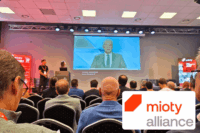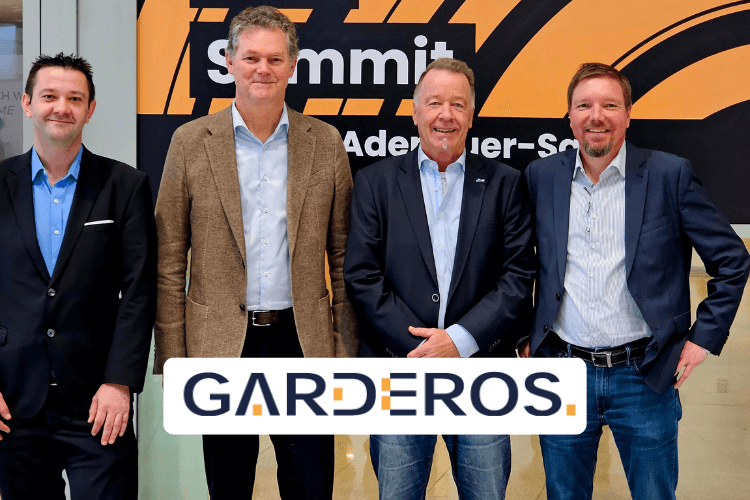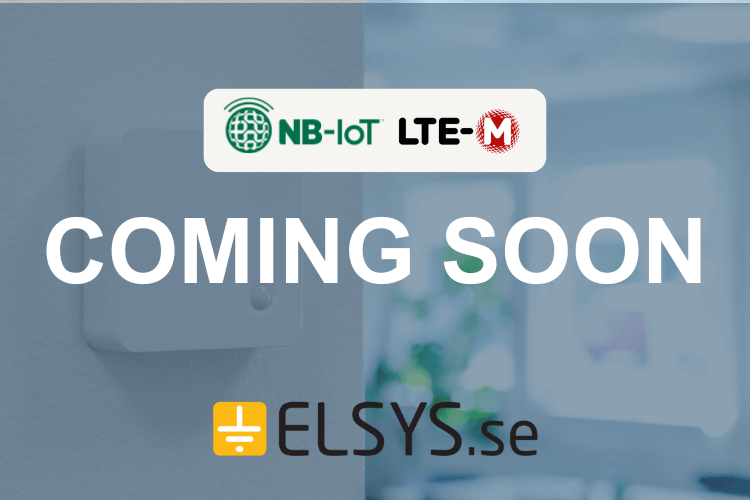mioty Global Summit 2025 - Will the future of LPWAN be orange?

The LPWAN technology mioty is becoming increasingly important - this was clearly demonstrated at the mioty Global Summit 2025, which took place in Nuremberg on May 15, 2025. Numerous members of the mioty Alliance, users and interested parties came together to discuss current developments and the future potential of this technology.
m2m Germany was also on site and is observing the developments surrounding this innovative technology with great interest.
Focus on "Made in Europe" innovation
At the start of the event, Bavaria's Minister of the Interior Joachim Herrmann emphasized the importance of European technology development in his opening speech. Especially in times of geopolitical tensions, which are putting increasing pressure on international supply chains and technology markets, this aspect should not be ignored.
Complementary technology in the LPWAN portfolio
Many of the presentations at the summit impressively demonstrated the technical advantages of mioty compared to existing LPWAN technologies such as LoRaWAN. Nevertheless, we at m2m Germany do not currently see mioty as a replacement, but rather as a useful addition to existing wireless technologies such as NB-IoT, LTE-M, WiFi HaLow or NB-Fi (Narrowband Fidelity). These technologies are each optimized for specific use cases, so it seems unlikely that they will be replaced by mioty. While NB-IoT or WiFi HaLow show their strengths in indoor tracking or integration into mobile networks, mioty scores with high scalability and interference immunity.
mioty as the modern successor to wM-Bus?
A particularly exciting area of application for mioty is in the field of wM-Bus (Wireless M-Bus), an established radio protocol for the wireless reading of consumption meters, e.g. for water, gas or electricity. mioty was originally developed with precisely these applications in mind and ties in with this technology.
The mioty Alliance is currently launching mioty4OMS, a solution that is specifically tailored to the OMS standard (Open Metering System). OMS is an open, manufacturer-independent standard that is widely used in Europe for communication between meters and gateways.
And with the latest generation 5 of the OMS standard, aspects such as security functions, data formats and interoperability have been further developed. As a result, mioty4OMS transmits these OMS 5-compliant messages efficiently, energy-savingly and robustly, even in difficult radio environments.
This makes mioty4OMS a future-proof alternative for traditional wM-Bus infrastructures - especially where conventional solutions reach their limits in terms of range or network stability.

Impressive application examples
A particularly impressive use case was presented at the summit: A radar sensor installed in a septic tank was able to send its data to a remote gateway without any problems despite the metal manhole cover - proof of the strong penetration and range of mioty.
The ability to reliably track assets at high speeds (e.g. 160 km/h on the highway or on a drone) also underlines the performance of the technology.
Thanks to forward error correction, data packets can even be reconstructed if only just over 50%of the data is received correctly - a clear advantage in very noisy or collision-rich environments.
Robust, standardized technology
mioty is based on the Telegram Splitting Technology developed by Fraunhofer IIS, which is defined in the ETSI standard TS103357 (TS-UNB). The technology consists of two software components:
- MIOTY sensor node software: Optimized for ultra-low-power microcontrollers
- MIOTY base station software: Runs on common IoT gateways with software-defined radio
Compatible gateways from well-known manufacturers such as MiroMico, RAK Wireless and Ast-X are already available for industrial use.
Further development and outlook
While LoRaWAN scores with features such as various spreading factors and device classes, mioty is continuously being expanded with new functions. This means that development is far from complete.
In order for mioty to establish itself permanently on the market, it is up to the mioty Alliance to create an interoperable ecosystem, certify manufacturer devices and convince users not only with technology, but also with economically attractive solutions.
Conclusion
mioty is a promising building block in the world of IoT with high scalability, robust transmission and European DNA. It remains to be seen whether orange, i.e. mioty, will really become the future color of LPWAN.


